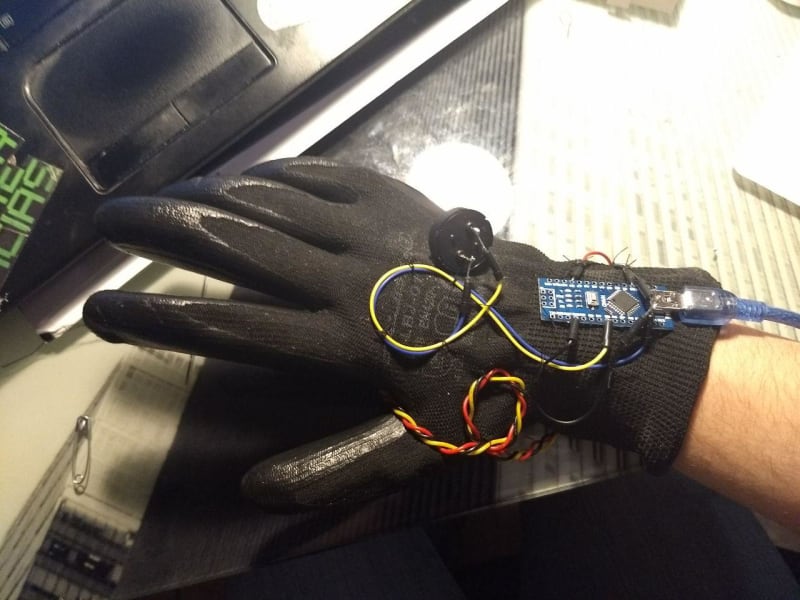Not long ago I saw in gearbest an Arduino Nano. I already used arduino uno and I love open hardware and gadgets, so I bought one to have some fun. Yesterday it arrived in home and I decided to make hand theremin I can dance and play with. Instead of using the breadboard like in most of my projects, if I wanted to use it in the street comfortably, I would need to weld some parts. First of all, I used:
- Piezo
- Light sensor + 20 KOhm
- Arduino nano
The Piezo needs to connect both to GND and to a digital pin, the light sensor to an analog pin, 5V and Ground. My light sensor is a bq module prepared for wiring, but in my schematics I provide the welding instructions for a normal sensor.
Now, the code has to be uploaded with the arduino IDE, using C. Mine is:
//sensor value and its limits
int sensorValue;
int sensorLow = 1023;
int sensorHigh = 0;
//for connection checking, no need to put the led in the actual circuit
const int ledPin= 13;
void setup() {
pinMode(ledPin, OUTPUT);
digitalWrite(ledPin, HIGH);
while (millis() < 5000) {
sensorValue = analogRead(A0);
if (sensorValue > sensorHigh) {
sensorHigh = sensorValue;
}
if (sensorValue < sensorLow) {
sensorLow = sensorValue;
}
}//end of while.
digitalWrite(ledPin, LOW);
}
void loop() {
sensorValue = analogRead(A0);
int pitch = map(sensorValue, sensorLow, sensorHigh, 50, 4000);
// I connected the piezo in digital 5
tone(5,pitch,20);
delay(10);
}
This is the wiring and other relevant instructions:
For the power supply I recommend using a power bank attached to the arm. Now go and have fun!





















